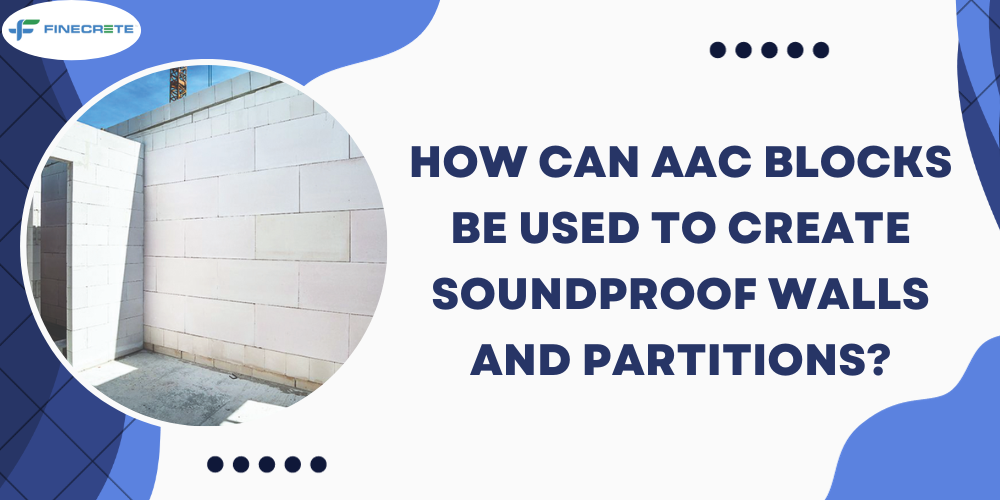When it comes to creating soundproof walls and partitions, AAC (Autoclaved Aerated Concrete) blocks are becoming increasingly popular for their exceptional acoustic properties. These lightweight concrete blocks offer a range of advantages in terms of sound insulation, making them an excellent choice for residential and commercial spaces where noise reduction is crucial.
How AAC Blocks Can Be Used to Create Soundproof Walls?
- Double Walls and Partitions with an Air Gap:
One of the most effective ways to achieve soundproofing using AAC blocks from AAC block Suppliers in Delhi is by creating double walls or partitions with an air gap between them. This method involves constructing two separate walls or partitions, with the inner layer made of AAC blocks. The air gap between these two layers serves as an additional barrier to sound transmission.
AAC blocks are used to build the inner layer of the wall or partition. These blocks are known for their porous structure, which helps in absorbing sound waves and reducing sound transfer. An air gap is created between the inner AAC block wall and the outer layer, which can be constructed using conventional bricks or other materials. This air gap acts as a buffer zone, preventing sound waves from easily passing through.
The porous nature of AAC blocks allows them to absorb and dampen sound, while the air gap further disrupts the transmission of sound waves. This combination effectively reduces the amount of noise that can travel through the wall or partition.
This method is highly effective in soundproofing walls between adjoining rooms, apartments, or office spaces. It ensures that unwanted noise is minimized, providing a peaceful and quiet environment.
- Floating Floors with AAC Blocks:
Another innovative method of using AAC blocks for soundproofing is by creating a floating floor. This technique is particularly useful in areas where noise from the floor above or below needs to be reduced significantly.
AAC blocks are used as the base layer for the floating floor. These blocks are laid on the existing subfloor, forming a solid foundation. On top of the AAC block base, an insulation layer is added. This layer is typically made of materials like acoustic underlayment or rubber mats, which are excellent at absorbing and dampening impact noise. Finally, the finish flooring material of your choice is installed over the insulation layer. This can be hardwood, laminate, carpet, or any other flooring option.
The key to soundproofing in this method is the decoupling effect created by the AAC block base and insulation layer. This decouples the finish flooring from the subfloor, preventing noise vibrations from easily traveling through the structure.
Floating floors with AAC blocks are commonly used in multi-story buildings, apartments, and commercial spaces to reduce the transmission of footsteps, impact noise, and other sounds between floors. It ensures that residents or occupants enjoy a quieter living or working environment.
Conclusion
These methods not only reduce noise transmission but also contribute to a more comfortable and peaceful environment. If you are looking to create a soundproof space that promotes tranquility and privacy, consider incorporating AAC blocks into your construction or renovation project. Your ears will thank you for it.






